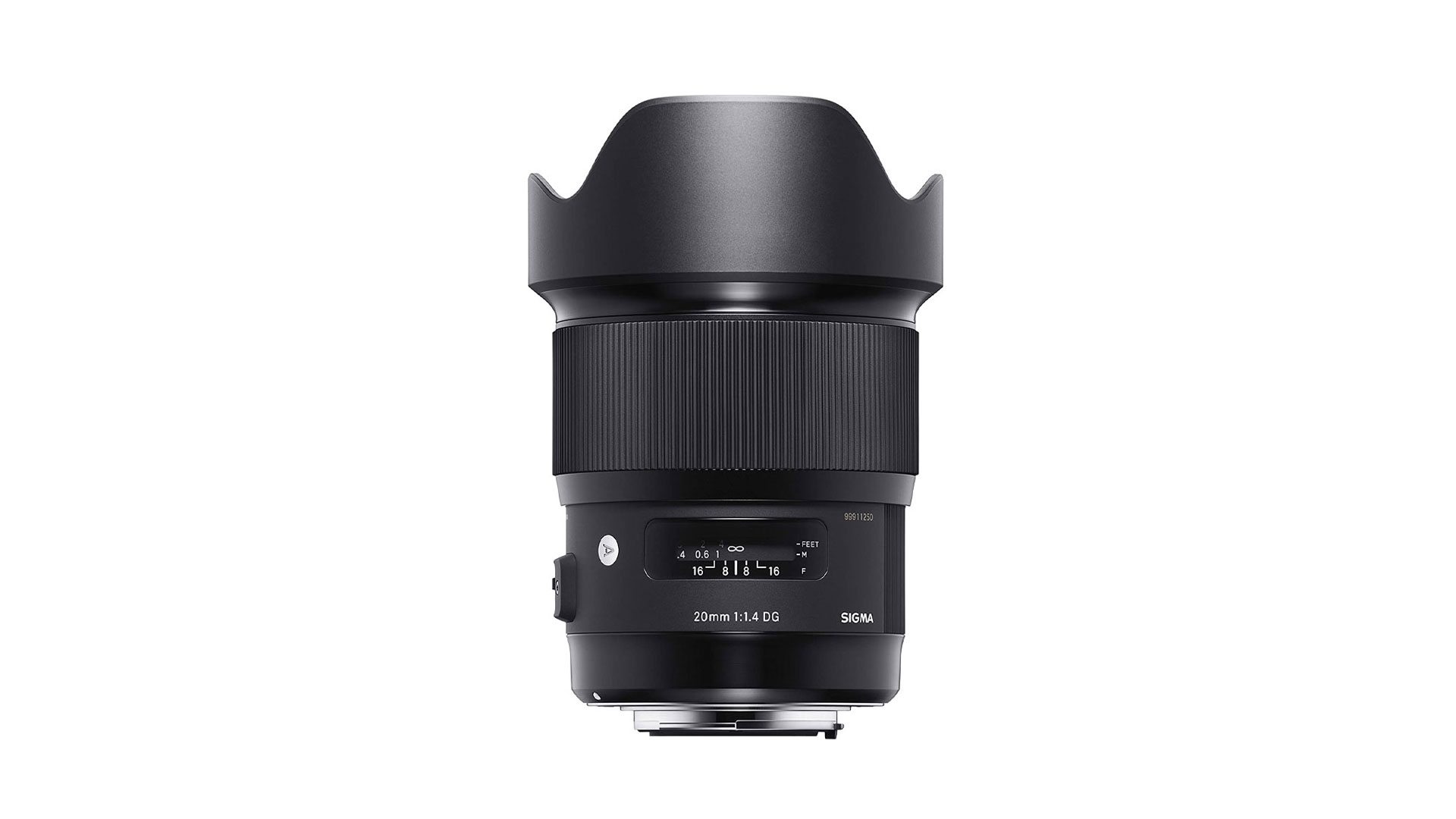Space Verdict
The Sigma 20mm F1.4 DG HSM ART lens is beloved of astrophotographers all over the world – and for once the hype is justified. A superb choice for wide-field astrophotography.
Pros
- +
Very light
- +
Fast maximum aperture
- +
Affordable
Cons
- -
Cheaper, non-AF glass available
- -
Focal length is too long for non-tracked images
- -
No filters
Why you can trust Space.com
Fast lenses, like the Sigma 20mm f/1.4 DG HSM ART lens, aren’t always cheap. And cheap lenses aren’t always good. The paradox is that astrophotography can be a spendy game – it’s not just the camera equipment you need, it’s the star tracking accoutrements as well, which means every penny counts when it comes to lenses.
Type: 20mm prime lens for full-frame and APS-C sensor cameras.
Compatibility: Available mounts: Canon EF, Nikon F-mount, Sony E-mount, Sigma SA-mount.
Focal range: 20mm fixed focal length.
Aperture range: f/2.8-f/16 constant.
Thread size: No filter thread.
Weight: 1kg
Problem is, a cheap lens is going to tell when it comes to star photography, wide-field or otherwise. Distortion, comatic aberration, purple fringing – if you penny-pinch on optics you could be setting yourself up for long-term disappointment.
Into the fray launches the Sigma 20mm f/1.4 DG HSM ART lens. At a little under $899 (£800) it’s not the cheapest of the cheap, but nor is it the Sigma 14mm f/1.8 DG HSM ART. It’s a great focal length for astrophotography, and that tempting, huge aperture means it absolutely drinks in light, giving you plenty of options when it comes to how you set up your exposures. But is it any good?
Sigma 20mm f/1.4 DG HSM ART lens review: Design
- 1kg weight
- Autofocus
- No filter thread
We’re big fans of Sigma’s ART range of lenses (see our 14mm f/1.8 and 12-24mm f/2.8 reviews to see us in full fanboy flow), and part of that is the build quality of the lenses. Here, Sigma’s experience building pro-grade lens is fully evidenced: quality materials and great-feeling construction make it immediately obvious where your money has gone versus the cheaper end of the astrophotography scale.
The glass is arranged in 11 groups, with 15 elements in total. Some are FLD ('F' Low Dispersion) glass, and some are SLD ('Special' Low Dispersion) in the name of chromatic aberration control, while Sigma claims its Super Multi-Layer Coating keeps flare and ghosting in check.
That 20mm focal length is a convenient one, and because it’s not at the super-wide end of things it means this lens has practical applications beyond astrophotography; because of its bright maximum aperture and autofocus (more on which in a moment) it’s well suited to commercial photographic jobs such as events, christenings, interior photography and more.
There’s no image stabilization, which won’t worry most astrophotographers, and contributes to the lens’ low weight. It actually varies ever so slightly depending on which version of the lens you buy – the Sigma SA-mount version weighs 950g; the L-mount version 1.035kg. That low weight does come at a slight cost, which is that the pro-grade weather sealing on some of Sigma’s other ART-series lenses is missing here. Given that astrophotography tends to be a fair-weather activity most readers here won’t mind, but it’s worth remembering if you’re buying this lens for more general adventuring.
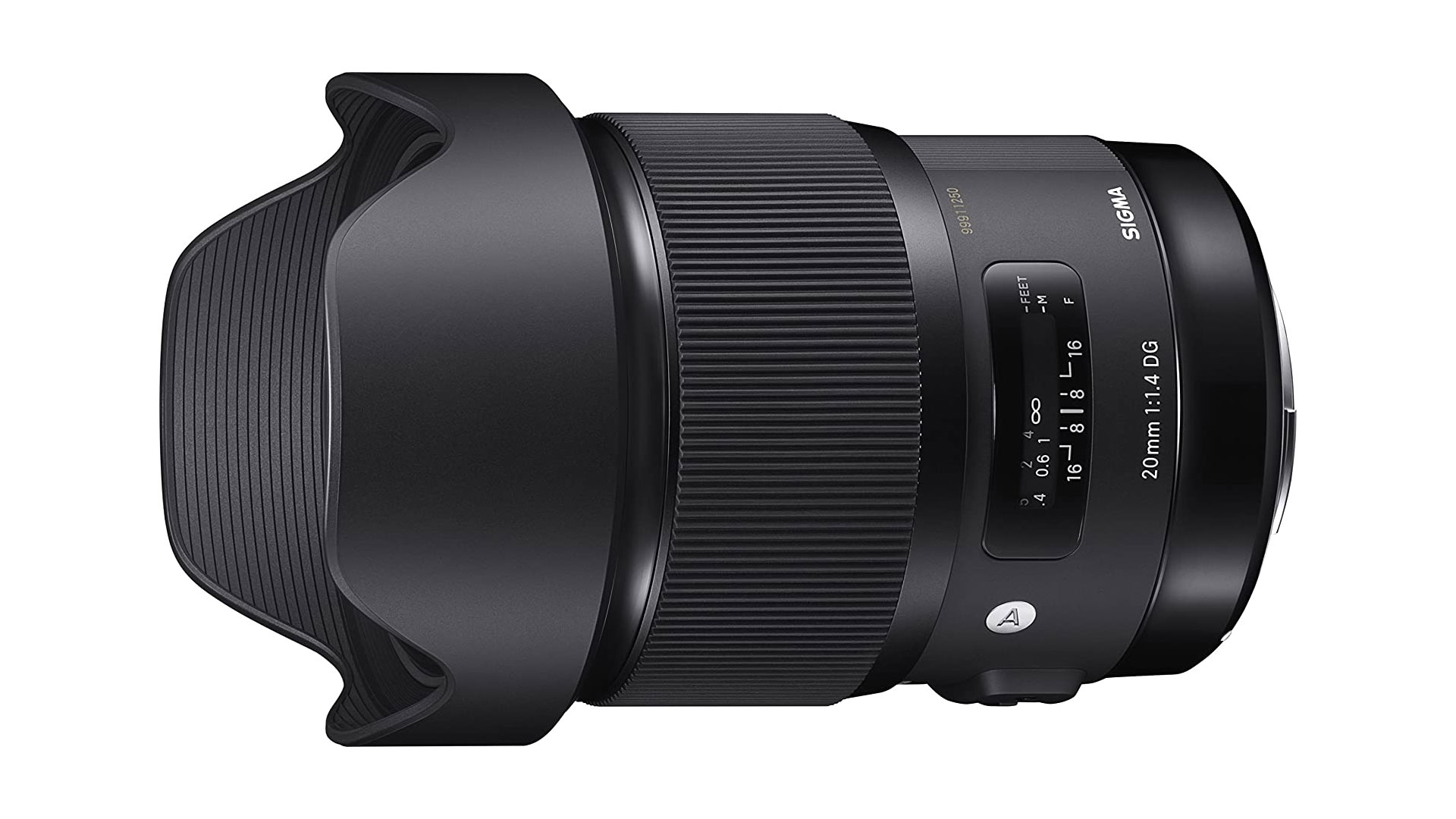
The aperture is, by any standards, a big ‘un. At f/1.4 it gives you a wide array of options when it comes to exposures. Nine aperture blades make for comfortable-looking bokeh, although defocused areas of the frame are generally a lesser concern for astro types. Still, it’s two stops faster than an f/2.8 lens, so working backwards that means if you’re shooting 30 seconds at ISO 3200 on an f/2.8 lens, you can use the 20mm f/1.4 and reduce the ISO to 800 without changing the overall exposure of the image. We’re not saying the 20mm ART was designed with astrophotography specifically in mind, but it certainly ticks a lot of boxes.
One area where it ticks fewer boxes – none, in fact – is for photographers who want to use it with filters. This chiefly applies to landscape snappers, although well-equipped astro types with light pollution filters and so on will also take interest. As with some of its other ultra-wide, ultra-bright lenses, the design here doesn’t allow for a traditional threaded filter ring, so if you want to use a filter, you’ll need to buy a third-party adapter. The 20mm f/1.4 is fairly popular with the cinematic community, so there are a few of these about – it’s worth checking there’s something that meets your needs, though.
A final consideration is focal length – 20mm is plenty wide, but wider lenses are out there, and fans of the 500-rule will know these can make a big difference to shutter speeds, with knock-on effects for ISO settings. At 20mm, for example, the 500 rule allows an exposure up to 25 seconds without trailing stars; at 14mm you get an extra 10 seconds. Mind you, we tried our review sample on the MoveShootMove star tracker and got some glorious results.
Sigma 20mm f/1.4 DG HSM ART lens: Performance
- Well-controlled chromatic aberration
- Geometric images, even at wide-angles
- Sharp from corner to corner
At some point Sigma will produce a stinker in its ART lens range, at which point we’ll be able to stop writing things like, 'we were expecting great things' but today’s not the day, because the 20mm f/1.4 is emphatically not a stinker.
Ultra-large aperture lenses occasionally throw up problems when you use them at their widest aperture, and while the 20mm f/1.4 isn’t at its absolute best when it’s positively drinking in light, it’s still very, very good. It’s extremely sharp at the centre of the image – comparable, we’d say, to some far more expensive lenses including some of Canon’s superlative RF-mount L-series glass – and although there’s a little bit of softness creeping in around the periphery of the image, you have to crop fairly aggressively to see it. To which a pragmatist would say, simply frame up your subject in the middle of the frame and you won’t have to worry about it.
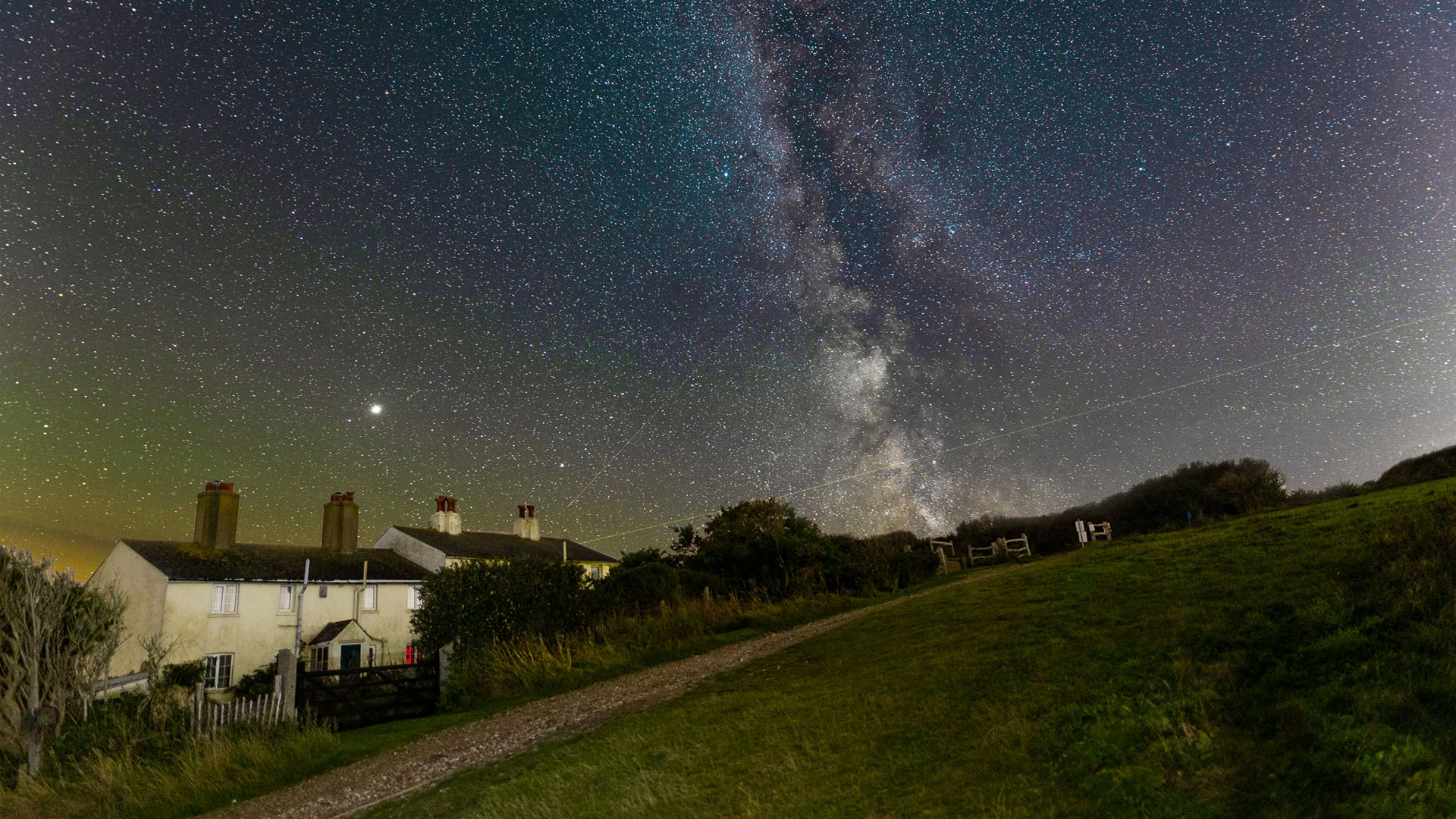
Coma? There’s a bit, with stars beginning to look a little elongated relatively close to the centre of the frame. Luckily, with such a wide range of aperture values available, if you don’t like how the lens handles pinpricks of light you can always stop down without ruining your frame.
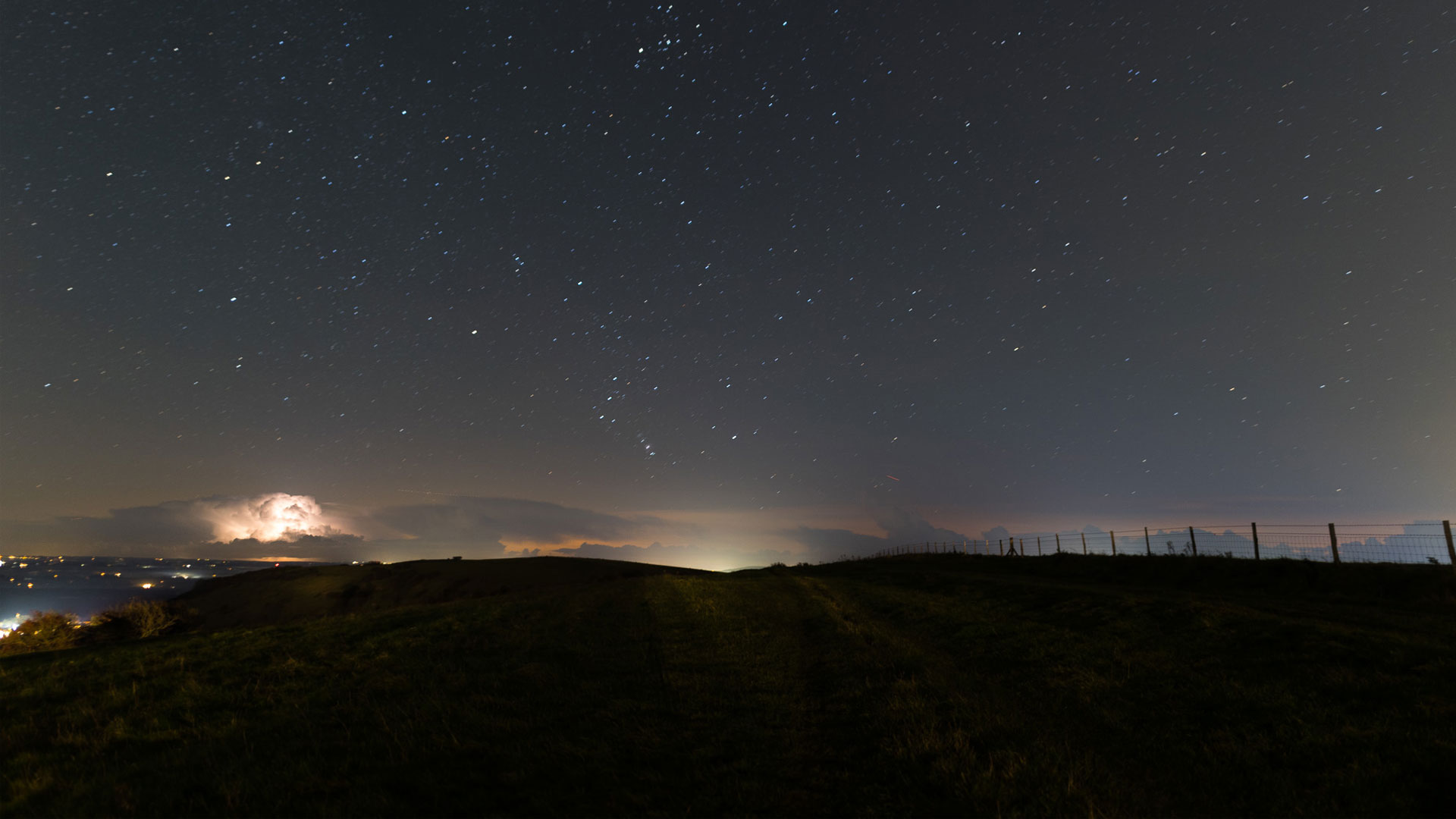
You shouldn’t forget that there are a number of reasonable quality, autofocus-free lenses out there, such as the Samyang 20mm f/1.8 ED AS IF UMC, and while there are a few differences in terms of quality – areas in which the Sigma is superior – the question of autofocus is worth bringing up, as most wide-angle lenses will find themselves deployed to non-astrophotography destinations at some point. The lens uses Sigma’s Hyper Sonic, which runs swiftly and silently. There are snappier-feeling lenses out there, but in use it’s not too frustrating and definitely falls into the 'nice to have' category.
Should you buy the Sigma 20mm f/1.4 DG HSM ART lens?
The positives pile up pretty quickly once you start to list the pros and cons of this excellent little piece of astrophotography kit. It can weigh under 1kg, which is great for those times when the perfect viewpoint is some way over the horizon and you’re already lugging a tripod, a star tracker, a Thermos full of coffee and all the accoutrements of a night under the stars. That such a light lens is able to produce such high-quality images is a testament to the design impresarios at Sigma.
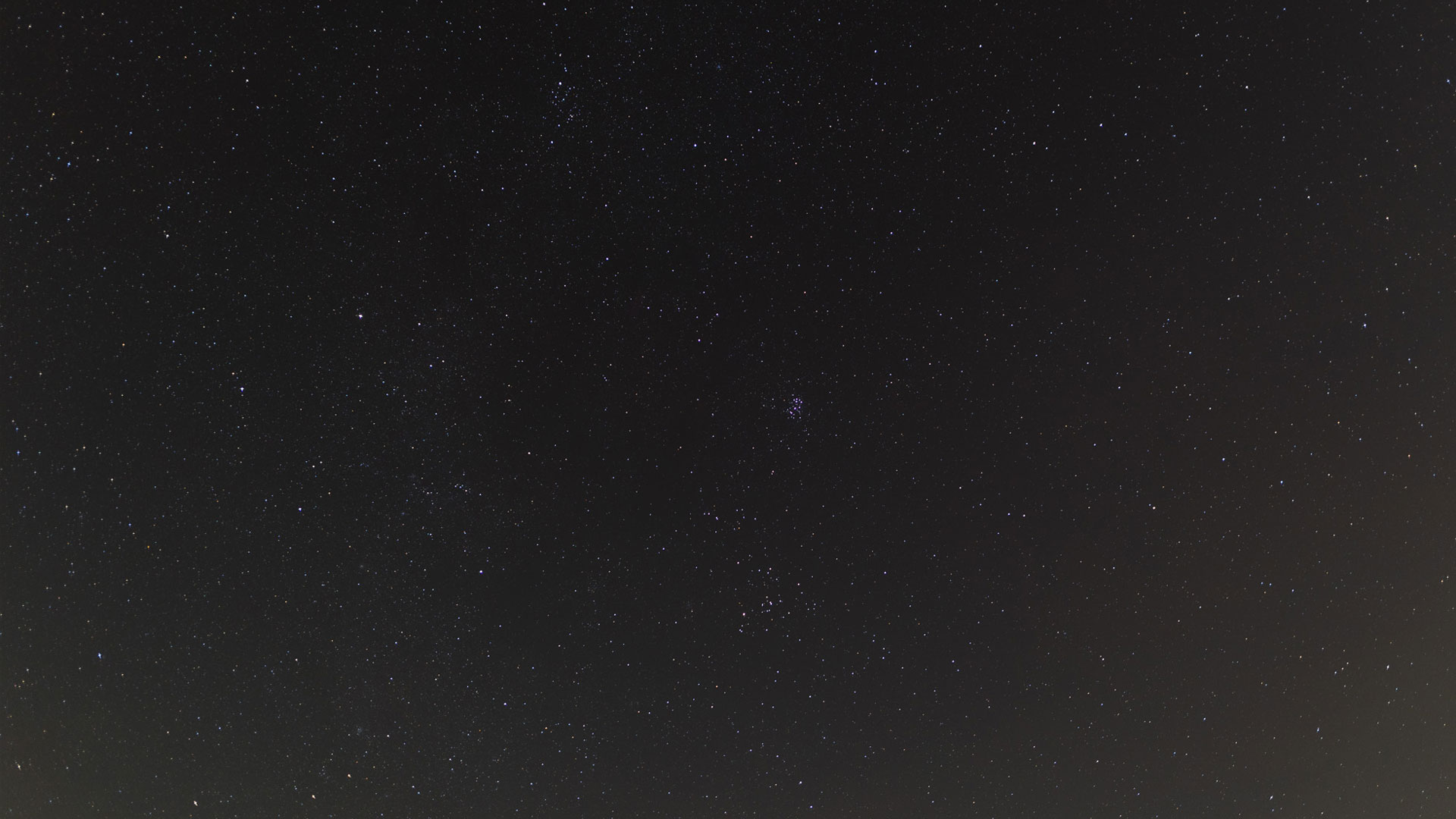
It’s not the only impressive thing about this lens. The build quality is convincing, and while it might be weather-sealed, there’s nothing about its construction that makes us think it needs to be handled with kid gloves.
More than anything, it shoots great images. Compared to the manual-focus-only crowd at the lower end of the market this is super sharp and super bright, and that means easier astrophotography and lower ISOs, which inevitably means technically superior images. This is a much-loved astrophotography lens for a reason.
If this product isn’t for you
Can’t bring yourself to spend the money? We’ve got you. Consider lenses such as the Rokinon 20mm f/1.8 AS ED UMC, which doesn’t have autofocus, but astrophotographers won’t mind. Alternatively, there are lenses out there that do away with the restrictions of prime focal lengths – consider Sigma’s own Sigma 14-24mm F2.8 DG HSM Art, or Nikon’s Nikkor 14-24mm F/2.8 G. Canon fans could opt for the RF 15-35mm f/2.8L IS USM – a significantly more practical focal length for all-purpose photography, albeit at the cost of a bit of aperture and quite a lot of money – Canon’s current wide-angle fast lens will set you back a bit over $2300 (£2,000).
Join our Space Forums to keep talking space on the latest missions, night sky and more! And if you have a news tip, correction or comment, let us know at: community@space.com.
Dave is a former contributing writer to Space.com in the areas of astrophotography and astronomy, often for reviews of various lenses used in capturing images of the stars. He lives and works in Hobart, Tasmania and is the Associate Professor of Art at the University of Tasmania, where he serves as School Research Coordinator and Head of Photography at the Tasmanian School of Art.
